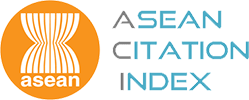A BIBLIOMETRIC ANALYSIS ON TRENDS, DIRECTIONS AND MAJOR PLAYERS OF INTERNATIONAL RELATIONS STUDIES
DOI:
https://doi.org/10.32890/jis2023.19.1.8Keywords:
bibliometrix, literature review, international studies, global IR, diversityAbstract
As communications technology, air travel, and a complex international economy continue to make the world smaller, the importance of peaceful and cooperative relationships between nations increases. However, it is unclear to what extent research on international relations (IR) has expanded as a global discipline; narrated by balanced perspectives and provides an impact. This study conducts a bibliometric analysis of 4,986 documents related to IR as recorded in the Scopus database from 1913 to 2022. Specifically, this paper analyzes (a) the trends and developments; (b) influential documents and frequent keywords and (c) major players in terms of productive journals, authors and institutions in IR studies. This paper provides a new panoramic view through tables and science maps on the publication of IR studies. The findings show a gradual interest in the IR field before the Second World War and this accelerated during the mid-twentieth century. Political economy is gaining more importance and most publications centre on IR theories
while discussing prevailing events affecting the world. However, the Western influence of IR is still primarily mainstream, where
IR publications are mainly controlled by large Western publishers, influenced by Western authors affiliated with long-established
Western institutions. Seemingly, the non-Western contributions to the IR field have yet to establish their own footing in the field despite much discussion about diversifying IR. This remains a challenge for non-Western scholars, journal publishers, and institutions seeking to contribute to the ongoing debate in the study of international relations.
References
Agnew, J. (1994). The territorial trap: The geographical assumptions of international relations theory. Review of International Political Economy, 1(1), 53–80. https://doi.org/10.1080/09692299408434268
Andrews, N. (2022). The persistent poverty of diversity in international relations and the emergence of a critical canon. International Studies Perspectives, ekac004. https://doi.org/10.1093/isp/ekac004
Acharya, A. (2011). Dialogue and discovery: In search of International Relations theories beyond the West. Millennium Journal of International Studies, 39(3), 619–637. https://doi.org/10.1177/0305829811406574
Acharya, A. (2014). Global international relations (IR) and regional worlds: A new agenda for international studies. International Studies Quarterly: A Publication of the International Studies Association, 58(4), 647–659. https://doi.org/10.1111/isqu.12171
Acharya, A., & Buzan, B. (2017). Why is there no Non-Western International Relations Theory? Ten years on. International Relations of the Asia-Pacific, 17(3), 341–370. https://doi.org/10.1093/irap/lcx006
Alejandro, A. (2022). Correction to: Do international relations scholars not care about Central and Eastern Europe or do they just take the region for granted? A conclusion to the special issue. Journal of International Relations and Development. https://doi.org/10.1057/s41268-022-00252-4
Aria, M., & Cuccurullo, C. (2017). Bibliometrix : An R-tool for comprehensive science mapping analysis. Journal of Informetrics, 11(4), 959–975. https://doi.org/10.1016/j.joi.2017.08.007
Aris, S. (2021). Fragmenting and connecting? The diverging geometries and extents of IR’s interdisciplinary knowledge-relations. European Journal of International Relations, 27(1), 175–203. https://doi.org/10.1177/1354066120922605
Asatryan, G., & Kalpakian, J. (2021). The making of global international relations: Origins and evolution of IR at its centenary: Amitav Acharya and Barry Buzan, Cambridge university press, 2019. The RUSI Journal, 166(4), 78–81. https://doi.org/10.1080/03071847.2021.1968771
Checkel, J. The Constructivist Turn in International Relations Theory’(1998) 50. World Politics, 324.
Chen, C.-C. (2011). The absence of non-western IR theory in Asia reconsidered. International Relations of the Asia-Pacific, 11(1), 1–23. https://doi.org/10.1093/irap/lcq014
Connelly, M. (2015). The Next Thirty Years of International Relations Research: New Topics, New Methods, and the Challenge of Big Data. Les cahiers Irice, 14, 85-97. https://doi.org/10.3917/lci.014.0085
Cox, R. W. (1981). Social forces, states and world orders: Beyond international relations theory. Millennium Journal of International Studies, 10(2), 126–155. https://doi.org/10.1177/03058298810100020501
Cox, R. W. (1983). Gramsci, hegemony and international relations : An essay in method. Millennium Journal of International Studies, 12(2), 162–175. https://doi.org/10.1177/03058298830120020701
Drulak P. & Drulakova, R. (2000). International relations in the Czech Republic: A review of the discipline. Journal of International Relations and Development. 3(3). Retrieved May 11, 2022, from https://ciaotest.cc.columbia.edu/olj/jird/jird_sept00drp01.html
Elsevier (N.d.). Scopus.com. Retrieved July 3, 2022, from https://blog.scopus.com/posts/scopus-filters-for-open-access-type-and-green-oa-full-text-access-option
Finnemore, M., & Sikkink, K. (2001). Taking Stock: The constructivist research program in international relations and comparative politics. Annual Review of Political Science (Palo Alto, Calif.), 4(1), 391–416. https://doi.org/10.1146/annurev.polisci.4.1.391
Fonseca, M. (2019). Global IR and western dominance: Moving forward or Eurocentric entrapment? Millennium Journal of International Studies, 48(1), 45–59. https://doi.org/10.1177/0305829819872817
Gilpin, R. G. (2016). The political economy of international relations. Princeton University Press.
Guzzini, S. (2000). A reconstruction of constructivism in international relations. European Journal of International Relations, 6(2), 147–182. https://doi.org/10.1177/1354066100006002001
Hafner-Burton, E. M., Kahler, M., & Montgomery, A. H. (2009). Network analysis for international relations. International Organization, 63(3), 559–592. https://doi.org/10.1017/s0020818309090195
Hendrix, C. S., & Vreede, J. (2019). US dominance in international relations and security scholarship in leading journals. Journal of Global Security Studies, 4(3), 310–320. https://doi.org/10.1093/ ogs/ogz023
Hopf, T. (1998). The promise of constructivism in international relations theory. International Security, 23(1), 171–200. https://doi.org/10.1162/isec.23.1.171
Horton, J. B., & Reynolds, J. L. (2016). The international politics of climate engineering: A review and prospectus for international relations. International Studies Review, 18(3), 438–461. https://doi.org/10.1093/isr/viv013
Inayatullah, N., & Blaney, D. L. (2004). International relations and the problem of difference. Routledge.
Jędrowiak, P. (2018). British scientific journals in the area of international relations – 2017 review. Przegląd Strategiczny, 11, 431–437. https://doi.org/10.14746/ps.2018.1.30
Jorgensen, K. E. (2017). International Relations Theory: A New Introduction (2nd ed.). Red Globe Press.
Keohane, R. O. (1986). Reciprocity in international relations. International Organization, 40(1), 1–27. https://doi.org/10.1017/s0020818300004458
King, G., & Zeng, L. (2001). Explaining rare events in international relations. International Organization, 55(3), 693–715. https://doi.org/10.1162/00208180152507597
Kirkpatrick, E. (2015). Visuality, photography, and media in international relations theory: A review. Media War & Conflict, 8(2), 199–212. https://doi.org/10.1177/1750635215584281
Kristensen, P. M. (2012). Dividing discipline: Structures of communication in international relations: Structures of communication in international relations. International Studies Review, 14(1), 32–50. https://doi.org/10.1111/j.1468-2486.2012.01101.x
Kristensen, P. M., & Tickner, A. B. (2022). Beyond a ‘More International’ International Relations. In Globalizing International Theory (1st Edition, pp. 33–53). Routledge.
Lebow, R. N. (2008). A Cultural Theory of International Relations. Cambridge University Press. https://doi.org/10.1017/cbo9780511575174
Lohaus, M., & Wemheuer-Vogelaar, W. (2021). Who publishes where? Exploring the geographic diversity of global IR journals. International Studies Review, 23(3), 645–669. https://doi.org/10.1093/isr/viaa062
Macuhin, A. (2019). Russian scientific journals in the area of international relations – 2018 review. Przegląd Strategiczny, 12, 423–426. https://doi.org/10.14746/ps.2019.1.27
McGlinchey, S. (2022). International Relations and the global system. E-International Relations. https://www.e-ir.info/2022/09/20/international-relations-and-the-global-system/
Mila-Maldonado, A., & Jaráiz, E. (2021). Social forces as political actors in international relations: A review from the critical theory. In Marketing and Smart Technologies (pp. 619–629). Springer Singapore.
Milani, C. R. S. (2021). The foundation and development of International Relations in Brazil. Review of International Studies, 47(5), 601–617. https://doi.org/10.1017/s0260210521000139
Milliken, J. (1999). The study of discourse in international relations:: A critique of research and methods. European Journal of International Relations, 5(2), 225–254. https://doi.org/10.1177/1354066199005002003
Munir, F., & Purnomo, M. (2019). Dimensions of the para-diplomacy of border areas in international relations studies: A systematic literature review. International Journal of Innovation, Creativity and Change, 10(3), 89-108.
Osiander, A. (2001). Sovereignty, international relations, and the Westphalian myth. International Organization, 55(2), 251–287. https://doi.org/10.1162/00208180151140577
Philpott, D. (2010). Revolutions in sovereignty: How ideas shaped modern international relations. Princeton University Press. https://doi.org/10.1515/9781400824236
Ruggie, J. G. (1993). Territoriality and beyond: problematizing modernity in international relations. International Organization, 47(1), 139–174. https://doi.org/10.1017/s0020818300004732
Robbie, S. (2012). International relations and non-western thought: Imperialism, colonialism and investigations of global modernity (R. Shilliam, Ed.; 1st ed.). Routledge.
Sahil, M., & Acharya, A. (2022) Towards Global International Relations. In McGlinchey, Stephen. Foundations of International Relations. London: Bloomsbury.
Singer, D. J. (1961). The level-of-analysis problem in international relations. World Politics, 14(1), 77–92. https://doi.org/10.2307/2009557
Smith, K. (2009). Has Africa got anything to say? African contributions to the theoretical development of international relations. The Round Table, 98(402), 269–284. https://doi.org/10.1080/00358530902895378
Smith, S. (2000). The discipline of international relations: Still an American social science? British Journal of Politics & International Relations, 2(3), 374–402. https://doi.org/10.1111/1467-856x.00042
Steinmetz, J. (2019). Chapter 7: International relations. In Politics, Power, and Purpose: An Orientation to Political Science. Fort Hays State University.
Tickner, A. B. (2003). Hearing Latin American voices in international relations studies. International Studies Perspectives, 4(4), 325–350. https://doi.org/10.1111/1528-3577.404001
Tow, W. T. (2015). International relations and foreign policy in the Australian Journal of Political Science: A review. Australian Journal of Political Science, 50(4), 627–638. https://doi.org/10.1080/10361146.2015.1114562
Turton, H. (2017). International Relations and American Dominance: A Diverse Discipline (1st ed.). CRC Press.
Uz Zaman, R., & Yasmin, L. (2022). Disciplinary history of International Relations (IR) in South Asia. In Oxford Research Encyclopedia of International Studies. Oxford University Press.
Victora, C. G., & Moreira, C. B. (2006). North-South relations in scientific publications: editorial racism? Revista de saude publica, 40 Spec no., 36–42. https://doi.org/10.1590/s0034-89102006000400006
Wæver, O. (1998). The sociology of a not so international discipline: American and European developments in international relations. International Organization, 52(4), 687–727. https://doi.org/10.1162/002081898550725
Wæver, O. (2016) Still a Discipline After All These Debates? In: Dunne, T., Kurki, M., Smith, S., (eds) International Relations Theories: Discipline and Diversity. Oxford: Oxford University Press.
Wendt, A. E. (1987). The agent-structure problem in international relations theory. International Organization, 41(3), 335–370. https://doi.org/10.1017/s002081830002751x
Zhang, J., Yu, Q., Zheng, F., Long, C., Lu, Z., & Duan, Z. (2016). Comparing keywords plus of WOS and author keywords: A case study of patient adherence research: Comparing Keywords Plus of WOS and Author Keywords. Journal of the Association for Information Science and Technology, 67(4), 967–972. https://doi.org/10.1002/asi.23437























